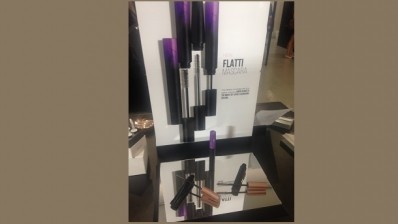Designing cosmetic and personal care packaging that women notice

Central to Goldstein’s approach to beauty and personal care packaging design is her company’s shelf-sight sequence principle. It’s a way of understanding the in-store shopping experience of consumers and how they encounter, process, and select a given item.
Visual vocabulary
We recall what we’ve seen, first by color, then by shape, next by symbols, and last by words, Goldstein tells Cosmetics Design. And creating well branded packages with this in mind makes all the more sense in light of the fact that 76% of purchase decisions are made at the shelf, according to data Goldstein shared.
Consumers look at a given product, she tells Cosmetics Design, for only 5 seconds. Color is “the first identifier shoppers notice and recall.”
Shape comes next: “after color, consumers notice holding and structural shapes.” Symbols are “the third identifier shoppers will see and retain." And words come forth, “a memorable descriptor or a unique selling proposition will resonate loud and clear [within] a shape,” explains Goldstein. (This would be a benefits claim, for instance, within an oval.)
More than words
When consumers recommend products to a friend or ask a family member to buy an item on their behalf, Goldstein notes, they often use the shelf-sight sequence to describe it. (e.g. the hair spray in the tall purple can with a woman’s silhouette, and it says ‘extra super hold’) Having a proprietary package design that’s easily recallable fosters word-of-mouth recommendations, easy in-store discovery, and more.
And, while words are given the least weight in this formula, they can be put to very good use, says Goldstein. Text on a package can turn it in to what she calls “a silent sales person.” Conversational branding can create a dialog with shoppers and help them locate the product that meets their needs.
Hello branding is also rising in popularity. Packaging here would include a friendly or welcoming statement, in a way, anthropomorphizing the product for the consumer.
The new black
Luxury sells to women, Goldstein tells Cosmetics Design. This is true, she says, even for “mid- to low- involvement category items in drug and grocery stores.” She believes luxury can be communicated in packaging with design and labeling elements like ethereal glows, jewel tones, and pearl essence.
Goldstein say that brands need to target consumers’ emotional response. “The all utilitarian look isn’t emotionally compelling. It’s a fad, not a trend. Emotions will rule forever.”
All this is to say that she believes those all-black compacts aren’t nearly as effective marketing tools as they could be. If this is true, several brands are due for a makeover.
















